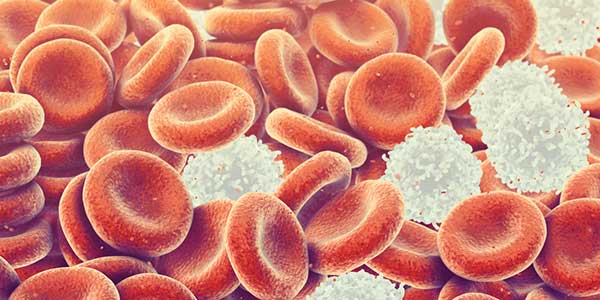
Considering the rise of overweight and obesity rates, the mind unsurprisingly drifts to weight-related conditions and disease states, including heart disease. And while protecting the heart is imperative, the health of life-sustaining blood should not go unnoticed, either. Additionally, better understanding the components of blood, including leukocytes, can tell a great story being told within our very own bodies. But what exactly are leukocytes and how might they be disturbed or elevated?
What Are Leukocytes?
Leukocytes, also known as white blood cells (WBC), are an important component of blood, which is also comprised of erythrocytes (red blood cells), platelets, and plasma. Leukocytes are further divided into five classes, including neutrophils, eosinophils, basophils, monocytes, and lymphocytes. Interestingly, though, leukocytes account for a mere one percent of the blood, though their impact is quite significant and imperative for maintaining good health. Leukocytes are part of the body's immune system, fighting against infection and protecting against illness and disease.
High WBC Count Causes
Also known as leukocytosis, a high white blood cell count is generally a count of more than 11,000 WBC in a microliter (µL) of blood. Though pregnancy, obesity, race, and age may cause an elevated WBC, leukocytosis is primarily caused by an inflammatory response related to various diseases and conditions which may include:
Infection
Considering the primary defensive role white blood cells play, it really is not too surprising a high WBC count indicates infection, Monocytosis and lymphocytosis (or elevated monocytes and lymphocytes, respectively) may indicate chronic infections such as tuberculosis and malaria.
Allergies
Varying allergic disorders, including asthma, hay fever, drug allergies, and allergic skin diseases may indicate eosinophilia, an elevation in eosinophils.
Leukemia
Also known as cancer of the blood cells, leukemia starts in the bone marrow and produces a mass amount of abnormal white blood cells. Leukemia comes in several types and forms, including acute or chronic conditions, with more information found at the official Leukemia and Lymphoma Society.
Immune System Disorders
Various immune system disorders may increase white blood cell production, including the autoimmune disorders of rheumatoid arthritis, Graves disease, and systemic lupus erythematosus (SLE).
Medications
Some prescribed medications may increase leukocytes, including corticosteroids, lithium, and epinephrine.
Stress
Both severe physical and emotional stressors may cause elevated WBCs, which may include post-surgical stress and panic attacks.
Signs and Symptoms of Leukocytosis
While symptoms are often from the cause of leukocytosis and may not even be experienced, common indicators may include:
• Fever
• Easy bruising and bleeding
• Feeling weak, dizzy, tired, or sick
• Pain or tingling in the extremities
• Difficulty thinking, breathing, or seeing
• Loss of appetite and unintentional weight loss
Diagnosis and Treatment
Despite prominence of any of the signs and symptoms indicated above, leukocytosis should not be self-diagnosed. Elevated WBC counts are diagnosed and confirmed through blood tests obtained from a healthcare provider, further including a potential personal medical history. Following diagnosis, the aim is to identify and treat the underlying cause, which may consist of IV fluids, medications, and/or leukapheresis, a procedure aimed to reduce WBCs. Medical emergencies and intensive treatments are commonly warranted if leukocytes are greater than 30,000 µL. If desiring more information on a high WBC count, find a more detailed evaluation of leukocytosis here.







